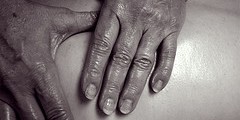The most noticeable place moisture is drawn from is your body. As warm dry air pulls moisture from your skin, mouth and nose you notice them becoming increasingly more irritated. Your skin becomes dry, itchy and even develops painful cracks. Your throat becomes scratchy and sore. Your nose becomes so dry that you may even notice the presence of blood. Low humidity is oneof the reasons people stay sick during the winter months. This is because your body naturally filters the air you breathe by way of mucus membranes. Mucus membranes are located in your throat and nasal passages. When these membranes become dry they lose their elasticity and crack. Once cracked they bleed giving a direct path for germs and bacteria to enter your bloodstream. The result is illness within a few days.
By Dr. Mercola
Humidity, or the amount of water vapor in the air, is an important health variable that is easy to overlook… yet very easy to remedy. Ideal humidity is generally described as between 40 percent and 60 percent, although some experts believe it should be closer to 35-45 percent.
When humidity is higher than this, as is common in the summer, it can contribute to the growth of mold, dust mites, and fungus, making it particularly dangerous for people with asthma and allergies. Low humidity is equally dangerous, however, and may even lead to serious complications to your health.
Low Humidity: Watching Out for This Common Winter Danger
During the winter months, heaters and cold temperatures may lead to dry air with low humidity. This dry air can lead to dry skin, irritated sinuses and throat, and itchy eyes.
Over time, exposure to low humidity can dry out and inflame the mucous membrane lining your respiratory tract. When this natural barrier is no longer working properly, it increases your risk of colds, the flu, and other infections. Further, in low humidity certain viruses may be able to survive longer, further increasing your risk of contracting an infection.
For instance, one study found that flu viruses survive longer, and spread more easily, when humidity levels are low.1 Nasal congestion may also be related to the temperature and humidity of inhaled air — perhaps more than any other variable, according to one study.2
The authors of the study suggested that the interaction between temperature and humidity influence “nasal cooling” as the air moves through your nasal cavity. This nasal cooling is detected by “sensors” inside your nose, which stimulate the sensation of airflow being either easy or obstructed, with cooler air resulting in feelings of less obstruction.
While high humidity can trigger nasal congestion, very dry air (i.e. low humidity) is also known to increase feelings of congestion because drying out your sinus membranes can irritate them further. So depending on your individual circumstances, if the air in your home is excessively dry, then increasing the humidity may help.
Low Humidity May Also Damage Your Eyes and Skin
If you struggle with dry, irritated eyes, low humidity could be a factor since it is known to increase the evaporation of tears. This may disrupt the moisture balance necessary for a healthy, comfortable eye surface.3
Reduced humidity combined with colder temperatures tends to wreak havoc on your skin as well. Many suffer with dry, scaly, itchy skin during winter months even if they don’t have a diagnosable skin problem like eczema.
This is commonly referred to as “winter itch,” caused when your skin is depleted of moisture. Aside from the itching, dry air will draw moisture out of your skin, making small cracks on your skin’s surface far more likely.
While it’s rare for infectious agents on your skin to cause a problem (it is typically only an issue when you transfer that to your nose or mouth), cracked skin will increase your risk of getting sick by providing an entryway for potentially dangerous pathogens through the cracked skin.
This is especially true in the winter and in dry environments where humidity levels frequently drop below 10 percent. According to research published in Environmental Health Perspectives,4 maintaining the proper humidity levels may help to lower rates of respiratory infections and allergies:
“The majority of adverse health effects caused by relative humidity would be minimized by maintaining indoor levels between 40 and 60%. This would require humidification during winter in areas with cold winter climates. Humidification should preferably use evaporative or steam humidifiers, as cool mist humidifiers can disseminate aerosols contaminated with allergens.”





Leave a Reply